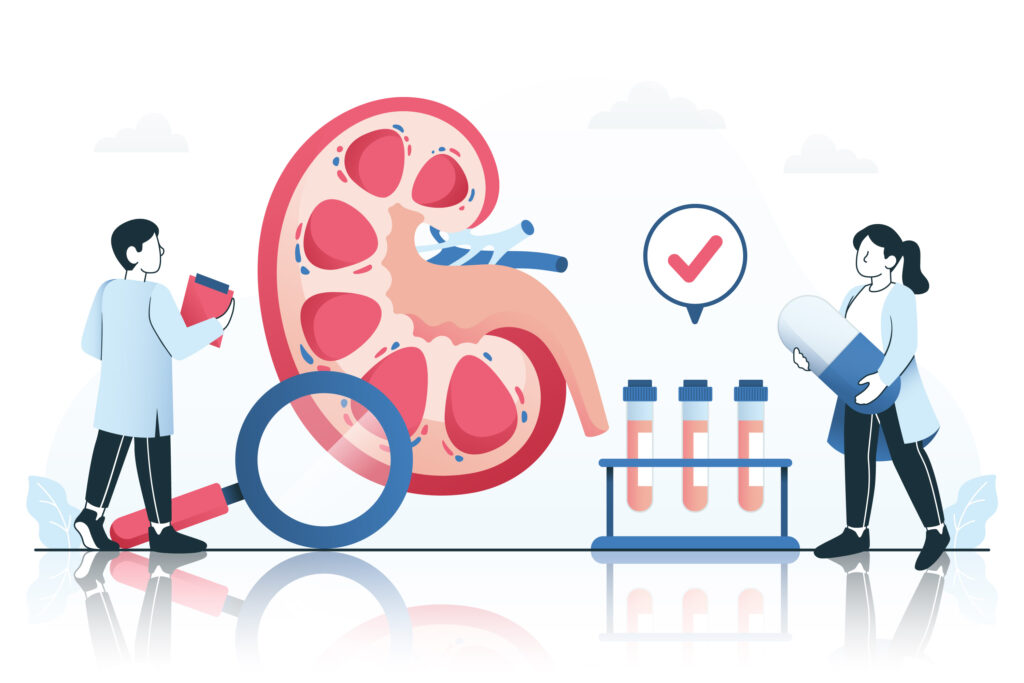Renal Replacement Therapy In the realm of medical science, renal replacement therapy (RRT) stands as a crucial procedure for individuals with kidney-related health issues. This comprehensive guide will delve into the world of RRT, exploring its various forms, indications, and the impact it has on patients’ lives.

Table of Contents
INTRODUCTION
Renal replacement therapy is a lifeline for individuals facing kidney health challenges. Whether it’s hemodialysis, peritoneal dialysis, or kidney transplantation, RRT offers hope, prolongs lives, and empowers patients to live life to the fullest. Understanding the different options, their benefits, and challenges is crucial for making informed decisions about kidney health.
Understanding Renal Replacement Therapy (RRT)
Renal Replacement Therapy, often abbreviated as RRT, is a life-saving medical intervention designed to support individuals with impaired kidney function. This comprehensive article explores the key aspects of RRT and its various benefits in detail.
Renal Replacement Therapy Explained

Renal Replacement Therapy, a critical medical procedure, is an umbrella term encompassing several methods aimed at substituting or augmenting the vital functions of the kidneys. When a person’s kidneys are unable to perform their natural filtration processes adequately, RRT steps in as a savior.
Types of Renal Replacement Therapy
Hemodialysis
Hemodialysis is a commonly used RRT method. During this procedure, blood is removed from the patient’s body and passed through a dialysis machine that filters out waste and excess fluids before returning the cleansed blood. Hemodialysis is generally performed in a clinical setting, often in specialized dialysis centers. Hemodialysis is a commonly used modality for RRT. During this procedure, a patient’s blood is externally filtered through a dialysis machine, which acts as an artificial kidney, cleansing the blood of toxins and excess fluids.
Procedure
Hemodialysis sessions can last for several hours and are typically conducted multiple times a week. The exact frequency and duration depend on the patient’s specific needs.
Dialysis Machine
These machines are equipped with special filters (dialyzers) that mimic the function of a healthy kidney. They efficiently remove waste and fluid from the bloodstream.
Pros and Cons
Hemodialysis is effective but may require strict adherence to treatment schedules. It can lead to lifestyle adjustments and dietary restrictions.
Peritoneal Dialysis

Peritoneal dialysis takes a different approach. It uses the lining of the patient’s abdomen (peritoneum) to filter waste and excess fluids. This method offers more flexibility and can often be performed at home. Peritoneal Dialysis is another method where a special fluid, known as dialysate, is introduced into the patient’s abdominal cavity, utilizing the peritoneum as a natural filter to remove waste products from the blood.
Procedure
A special fluid (dialysate) is introduced into the abdominal cavity through a catheter. The peritoneum acts as a natural filter, cleansing the blood over time. The dialysate is then drained, taking waste products with it.
Types of Peritoneal Dialysis
There are two primary types: Continuous Ambulatory Peritoneal Dialysis (CAPD) and Automated Peritoneal Dialysis (APD), each with its own routine and advantages.
Pros and Cons
Peritoneal dialysis provides more independence and a less restrictive diet. However, it requires careful self-care and carries some risk of infection.
Kidney Transplantation

Kidney transplantation is the most definitive form of RRT. It involves the surgical replacement of a failing kidney with a healthy one from a living or deceased donor. Kidney transplantation making it the most definitive form of RRT.
Procedure
The surgical procedure can be complex, but the benefits are substantial. A successful transplant can restore near-normal kidney function.
Donor Types
Donors can be living relatives, unrelated living donors, or deceased donors. Each option has its own considerations and criteria.
Success Rate
Kidney transplants have a high success rate, with most recipients enjoying improved quality of life and longevity.
The Role of RRT
Enhancing Kidney Function
One of the primary goals of RRT is to enhance or even temporarily replace the critical functions of the kidneys. It helps in maintaining the body’s internal equilibrium, ensuring that waste products and excess fluids are efficiently removed.
Indications for Renal Replacement Therapy

RRT becomes necessary in two main scenarios: End-Stage Renal Disease (ESRD) and Acute Kidney Injury (AKI).
- End-Stage Renal Disease (ESRD): In ESRD, the kidneys have lost nearly all their function, and RRT becomes a life-sustaining therapy.
- Acute Kidney Injury (AKI): In cases of severe AKI, where kidney function rapidly declines, RRT may be used as a temporary measure to assist the kidneys’ recovery.
Choosing the Right RRT
The choice of RRT method should be individualized, taking into consideration the patient’s lifestyle, preferences, and overall health. A collaborative decision involving medical professionals, patients, and their families is crucial. The choice of the most suitable RRT modality depends on various factors, including Collaborative decision-making involving medical professionals, patients, and their families is essential.
Benefits of RRT
RRT can significantly improve the quality of life for those with kidney issues. It helps in prolonging life expectancy and allows patients to continue their daily activities, even though some adjustments are necessary.
1. Improved Quality of Life
RRT can significantly enhance the quality of life for individuals with kidney issues. It helps in maintaining overall well-being, despite some necessary lifestyle adjustments.
2. Prolonging Life Expectancy
RRT can extend the life expectancy of individuals with kidney failure, allowing them to enjoy more years of a fulfilling life.
Challenges and Side Effects
TAB TO KNOW ABOUT WESTLAKE DERMATOLOGY
While RRT is life-saving, it comes with challenges. Patients may face an increased risk of infection, dietary restrictions, and emotional impact. It’s essential to address these aspects as part of the treatment plan.
Costs and Insurance
The financial aspects of RRT can be a concern for many. Patients should explore insurance coverage and financial assistance programs to make the treatment more manageable. Exploring insurance coverage and financial assistance programs can help alleviate this burden, making the treatment more accessible.
Life After RRT
Life after RRT involves close monitoring, adherence to medication and dietary recommendations, and maintaining a healthy lifestyle. With proper care, many patients can lead fulfilling lives post-RRT.
Conclusion
Renal replacement therapy plays a pivotal role in the lives of individuals with kidney-related health issues. It offers a lifeline to those in need, helping them regain control of their lives and health.
FAQs
- Imagine hemodialysis and peritoneal dialysis as two different superheroes, each with their unique powers to fight kidney failure. Hemodialysis involves using a machine to filter blood outside the body, while peritoneal dialysis uses the patient’s abdominal lining as a natural filter.
- How long can a kidney transplant last? A successful kidney transplant can last for many years, and some can even last a lifetime.
- Are there any alternative treatments to RRT? While RRT is the most common treatment, there are alternative treatments, such as dietary and lifestyle modifications, which may be suitable for some patients.
- Can you live a normal life while on RRT? With proper management, many RRT patients can lead a relatively normal life, although some adjustments are necessary.
- What are the dietary restrictions for RRT patients? Dietary restrictions for RRT patients may include limits on sodium, potassium, phosphorus, and fluid intake. These restrictions vary depending on the RRT method and individual health needs.
Pingback: Unlock Positive Power of the 4 MBTI Cognitive Functions: A Journey of Self-Discovery - Faisal Bin Nayeem
nominativally xyandanxvurulmus.ekm5fjyEqqM7
thx
thx
thx
thx
thx
thx
thx
thx admin
thx